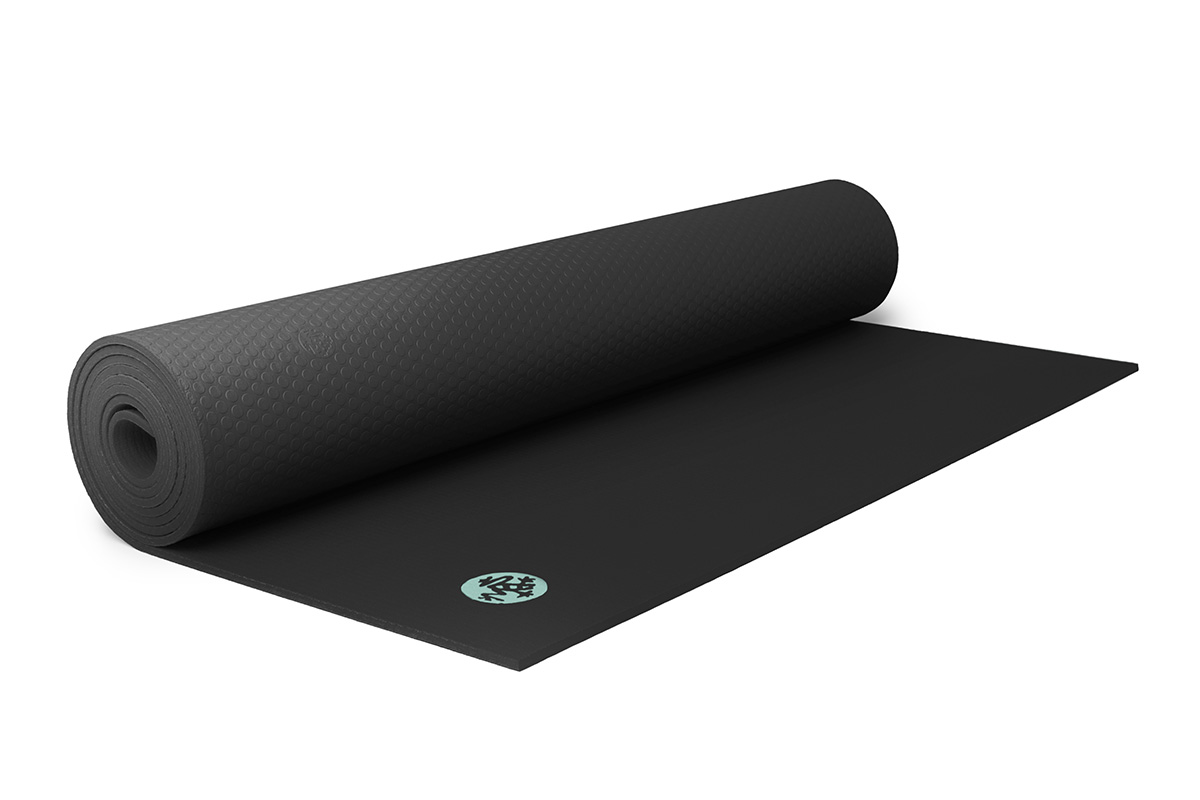Choosing the Right Yoga Mat
What makes a good yoga mat?
The most important qualities in my opinion are: Cushion (enough to protect joints but not too much that it throws off balance), weight (easy to carry to class), and durability. The $15 mats may see breakdown after a few weeks, so consider this when purchasing.
The question isn’t necessarily what makes a good yoga mat, but what qualities in a yoga mat make you feel good in a practice designed to make you feel good. A good yoga mat is relative to the individual. If you want to invest in a high-quality yoga mat, I’ve outlined the most important features below.
The 8 Most Important Features
- Durability and longevity — A yoga mat’s ability to withstand even the toughest of practices over time.
- Comfort and support — Just enough cushioning for your joints can reduce squirming in kneeling postures and provide padding for impact, but not so much that it compromises support.
- Stability — A firm, dense mat can help you feel stable throughout standing and balancing poses.
- Portability — Consider how much travel you will be doing with your mat. A mat’s weight and size will dictate whether or not it is toteable. Since most people walk, bike, and travel to class, an easy-to-carry mat is an important feature.
- Traction and stickiness — It’s important for a mat to provide traction both to keep you from slipping and in staying connected to the ground. The last thing you want is for your mat to function as a Slip N’ Slide.
- Texture — Mats have different surfaces, but most yogis agree that it’s best to have a mat that feels most natural.
- Environmental consideration — Buying an eco-friendly yoga mat is important to many practitioners. If this holds true to you, consider purchasing a mat made from all-natural materials.
- Size — Your yoga mat should cover the length and width of your entire body. Not every yoga mat comes in various widths and sizes, so make sure to check measurements before purchasing.
Bonus Features to Look For
These don’t make a yoga mat “good” per se, but they add a nice touch, depending on your own interests and beliefs.
- Giving back: Many brands are part of a greater cause, participate in recycling programs, or give back for every mat that’s sold. Consumers often like to both feel good and do good!
- Color selection: Not every brand provides an assortment of colors, patterns, and sizes, although most provide neutral colors. It’s nice to have options.
- Smell: This seems like a weird one, but depending on the material used, mats can have an undeniably strong scent. It’s not out of the realm for shock to set in after taking a nice big inhale through your nose in child pose. Although, most of the manufactured smell disappears over time.
Final Thoughts Best All-Around Yoga Mat
Manduka PROliteThe best yoga mat that will support your asanas and be your new place to call OM for a lifetime.
Like your practice, your yoga mat should be one that you invest in, one that you keep coming back to, and one that supports you through every inhale and exhale. It should feel like a little island you want to call home for every practice.
The Manduka PROlite allows me to take my practice in a variety of settings and teach to a number of yoga styles, while ensuring a long-lasting relationship with my mat. Another favorite among yoga professionals, the Jade Harmony Professional Mat is a heavy duty mat made of 100 percent rubber.
If things get extremely hot and sweaty, I suggest turning to Liforme Yoga Mat to ensure you don’t slip and slide around.
Don’t be afraid to test a few mats on your own and ask around before making a purchase.
When a yoga mat feels just right for you, it can make all the difference in your practice.
Source: http://www.reviews.com/best-yoga-mat/


